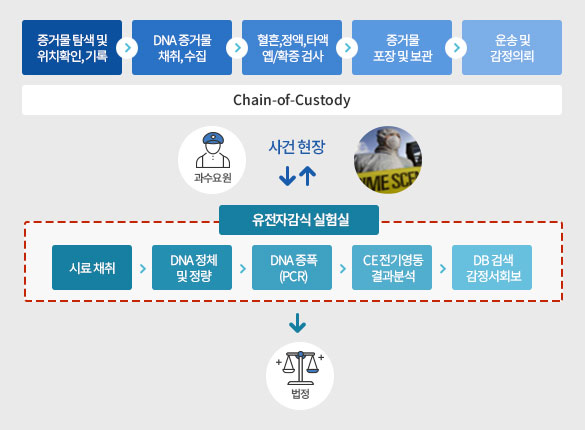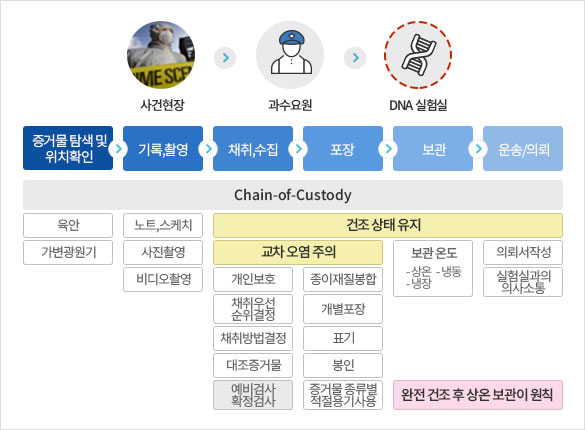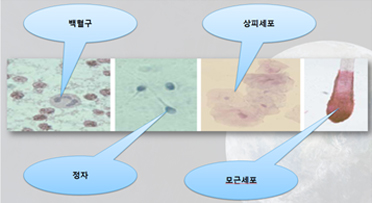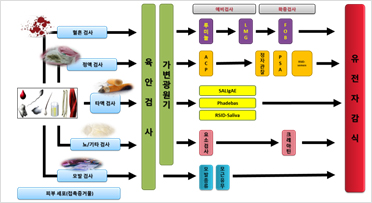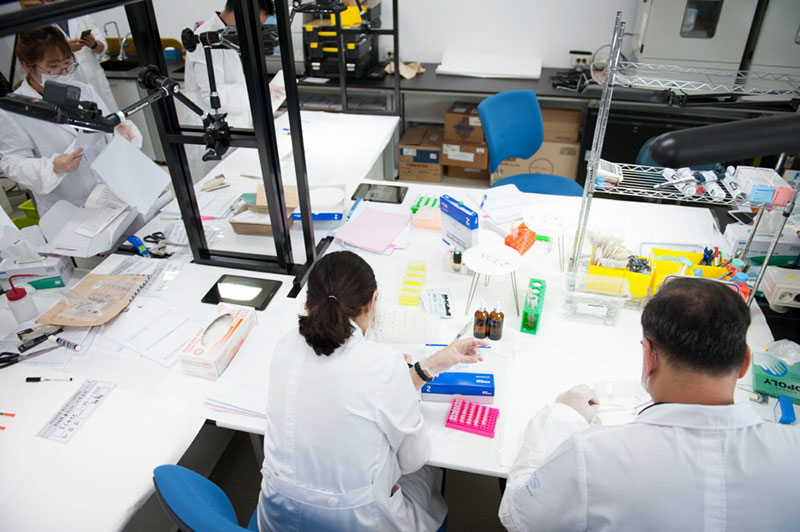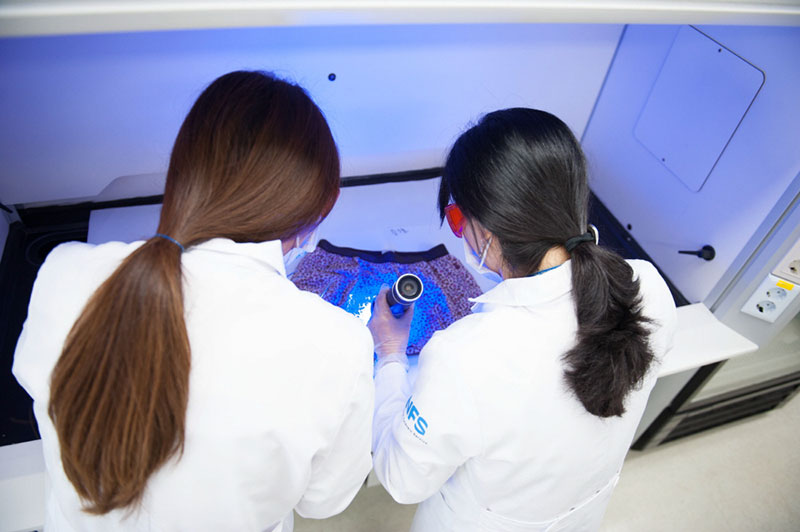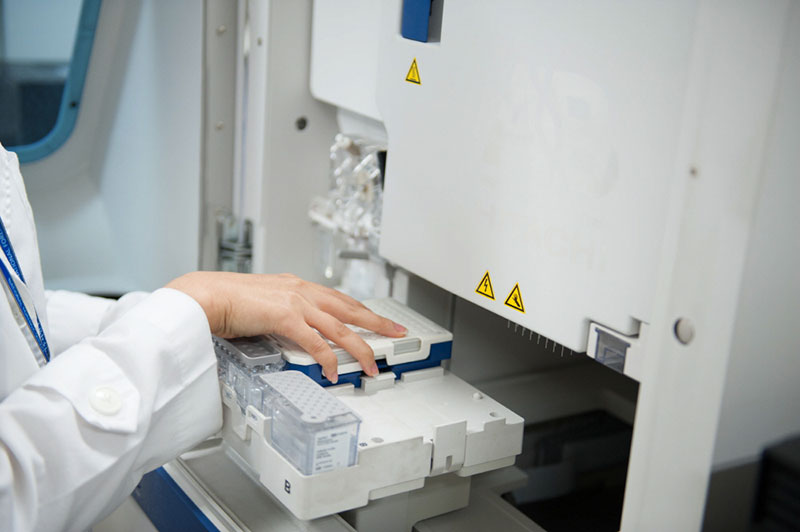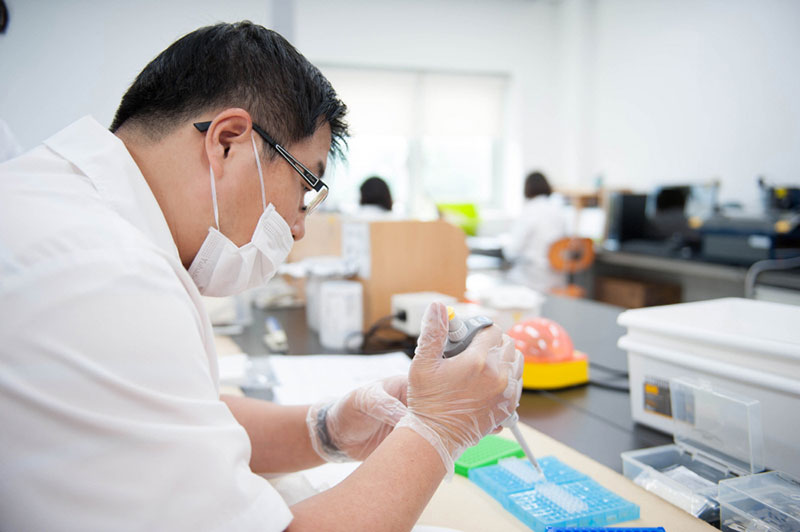Analysis Service
Forensic DNA Division

The Forensic DNA Division started DNA identification services in 1991
for the first time in South Korea and has been performing personal
identification and confirmation of identity for various incidents and
accidents. It obtained accreditation from KOLAS International
Accreditation Agency in 2004 for the first time in South Korea and is
recently teaching DNA identification techniques through the KOICA ODA
project, etc. It has been internationally recognized for solving the
Seorae Village Infanticide Case in 2006 and played a leading role in
identification of victims of major disasters such as the Daegu Subway
Fire, Sinking of the Sewol Ferry, etc.
Additionally, in
accordance with the Act on the Protection and Support of Missing
Children, etc. in 2005 and the Act on the Use and Protection of DNA
Identification Information in 2010, the Forensic DNA Division has
built a national DNA identification information database, and DNA
quality control service for unresolved murder cases has been newly
established as the statute of limitations for murder cases has been
removed due to the amendment of the Criminal Procedure Act in 2015.
Furthermore, it carries out species identification and object
identification of animals, plants, microorganisms, foods, etc.
through DNA analysis and supports investigative agencies through
“emergency analysis” for major violent cases.
 DNA Analysis
DNA Analysis
DNA identification of crime scene evidence of violent cases (murder, robbery), sexual violence, theft, etc.
 Identification
Identification
Identification through DNA analysis for persons accidently killed, missing persons, missing children, missing elderly with dementia, persons with mental retardation and independence patriots
 Forensic Biology
Forensic Biology
Species identification and blood type analysis for non-human life forms such as animals, plants, microorganisms, etc.
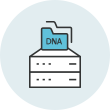 DNA Identification Information Database
DNA Identification Information Database
Listing DNA identification information on crime site evidence and arrested suspects to the database and search according to the enforcement of the Act on Use and Protection of DNA Identification Information (July 26, 2010), quality control service
Major Analysis Kit

Various Application Fields of DNA Identification
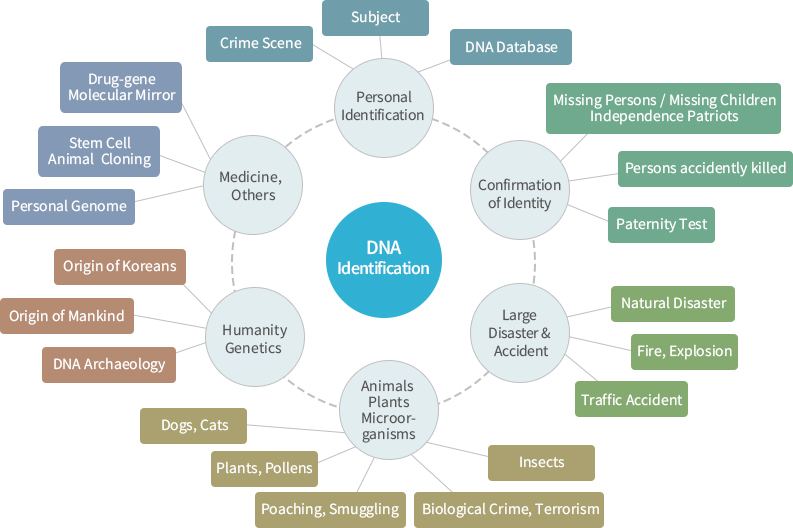
Introduction of Laboratory
The Forensic DNA Division consists of a DNA Analysis Lab, Trace DNA Analysis Lab, Emergency Precise Analysis Lab, Arrested Suspect Analysis Lab, Search Target Analysis Lab, DNA Information Management Lab, DNA Quality Control Lab, Missing Child Analysis Lab, DNA Identification Lab, and Forensic Biology Lab.
The DNA Analysis Lab analyzes the DNA profile of human samples such as bloodstains, semen, saliva, hair and skin cells collected from crime scene evidence related to violent cases (murder, mutilation, robbery, sexual violence, etc.), narcotics offenders, traffic accidents, accidents, fraud, etc.
Role of DNA identification (between the investigative agency and court)
Precautions for collecting, packaging, storing, and transporting DNA evidence from crime scenes
DNA profiling is carried out in trace amounts of evidence collected at the crime scene. In particular, the evidence collected at a theft site often contains trace amounts of contact evidence that is less visible than normal bloodstains or semen. After obtaining the DNA type from such a small amount of contact evidence, the laboratory detects the DNA type of the criminal and helps the police solve the case.
DNA Profiling Work Flow
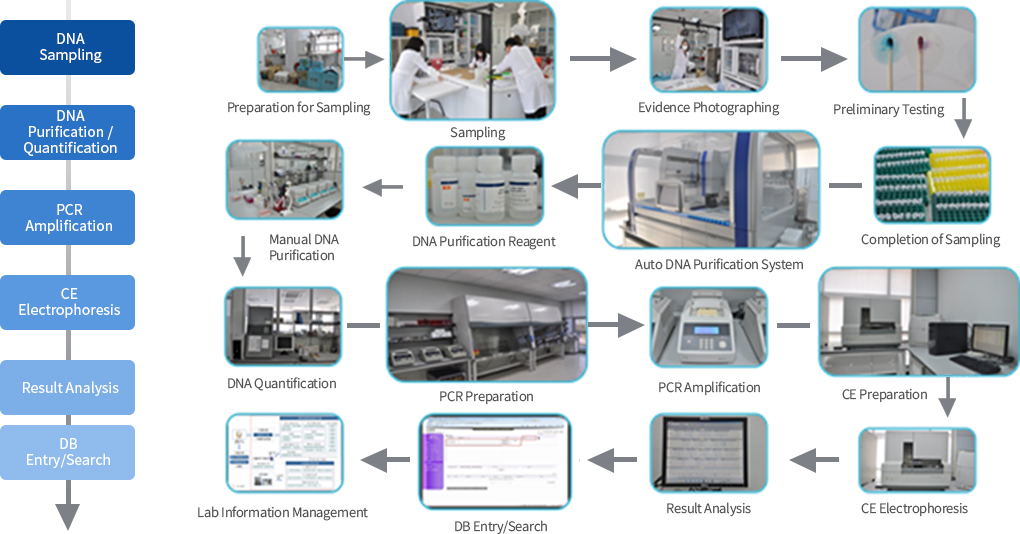
The Emergency Precise Analysis Lab conducts DNA profiling and research on evidence related to urgent violent cases, accidents and criminal investigations as well as precise analysis on evidence in unsolved cold cases. Additionally, it provides urgent analysis services on the evidence of violent cases (murder, rape, robbery, traffic accidents, etc.) for local institutes. The laboratory makes great contribution in criminal investigations and solving incidents and accidents with faster and accurate DNA analysis and profiling in close cooperation with the police.
Emergency Analysis Handling Process
 Pre-distribution
of
Pre-distribution
of
Analysis Request Sticker Upon
occurrence of
Upon
occurrence of
an incident requiring
emergency analysis,
make a verbal report to the
National Police Agency first Filling in the sticker
Filling in the sticker
after receiving a request no. Request
for
Request
for
Emergency Analysis Organizing
the analysis team
Organizing
the analysis team
Notification of the result within
the shortest time
The Arrested Suspect Analysis Lab compares the DNA database for
unsolved cases through DNA analysis on the samples of suspects
arrested for 11 major crimes (murder, rape, juvenile sexual
assault, robbery, arson, abduction, habitual violence, organized
violence, narcotics, special theft, murder of a ranked soldier
under military criminal law, etc.) in accordance with the 『Act on
Use and Protection of DNA Identification Information』 enacted on
July 26, 2010. The DNA database for unsolved cases is built with
DNA data isolated from the evidence of numerous rape, theft, and
murder scenes.
For personal information protection, the
requesting agency encodes the personal information and assigns an
identification code to the arrested suspect sample. The DNA
analysis result for the arrested suspect is stored in the arrested
suspect database with the identification code, and the remaining
sample and DNA are immediately disposed.



The Search Target Analysis Lab performs DNA profiling and research of a search target requested by the police with regard to the crime scene DNA identification information.
Services provided by the Search Target Analysis Lab
- Listing the DNA data requested by the main and branch institutes, search and distribution of search results
- Search of DNA types of search targets of related cases before the request of the police agency
- Distribution of a copy of analysis report for the search-related request
- DNA storage and management
- Management of unsolved critical serial cases
The DNA Information Management Lab performs search and management of DNA identification information of crime site evidence and arrested suspects by establishing a DNA Identification Management System (DIMS) in accordance with the 『Act on Use and Protection of DNA Identification Information』.
Services provided by the DNA Information Management Lab
- Database listing and management of DNA identification information of crime scene evidence analyzed by this institute and each local institute
- Database listing and management of DNA identification information of arrested suspects analyzed at the arrested suspect analysis lab of this institute
- Investigation support for rapid case resolution, such as rapid criminal identification and detection of serial crimes committed by the same person through database search
- Purpose of 『Act on Use and Protection of DNA Identification Information』 Article 1 of the Act stipulates that "This Act aims to contribute to criminal investigations and prevention and protect the rights and interests of citizens by establishing the requirements for the collection, use and protection of DNA identification information.
- Necessity of DNA Identification Information Database Due to the increased number of violent cases and intellectualization of crime techniques, the laboratory obtains and manages “DNA identification Information’’ of persons who previously committed a violent crime and specifies a criminal for rapid arrestment by comparing DNA identification information detected in the stored data with the information detected at crime scenes.
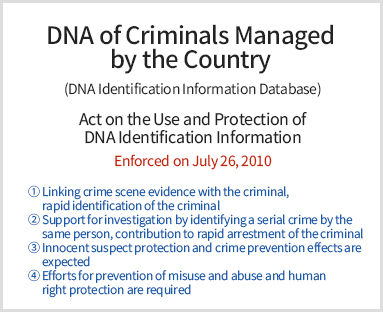
The DNA Quality Control Lab performs quality control and research on DNA as well as manage remaining amounts of DNA used for current or past testing. Additionally, it operates the DNA identification database that rules out and performs DNA information analysis and research for the purpose of criminal investigation.
The Missing Child Analysis Lab caries out family identification through DNA search of missing children and their guardians by linking services with the "Missing Child Specialist Institution“ commissioned by the Ministry of Health and Welfare in accordance with the 「Act on the Protection and Support of Missing Children, etc. 」. * In accordance with the 「Welfare of Older Persons Act」 amended in 2012, the laboratory conducts a DNA-based Dementia Elderly Finding Project for missing elderly with dementia by linking services with the "Central Dementia Center" commissioned by the Ministry of Health and Welfare. It also carries out confirmation of the descendants of independence patriots requested by the 「DNA Analysis Project for Descendants of Independence Patriots, etc.」 and family identification through genetic testing of missing persons and their caregivers (bereaved family).

The DNA Identification Lab performs identification services for unidentified dead bodies and victims of major disasters. For old bones or corrupted bodies, nuclear DNA and mitochondrial DNA analyses are performed. The identification process is performed by the request of the family of the missing person, and if the identity is not confirmed, the case is managed in the database for unidentified dead bodies.
The Forensic Biology Lab performs analysis throughout forensic biology including species identification of non-human samples such as microorganisms, plants and animals and serological analysis on blood, bloodstains, tissues, etc.
- Identification of
Microorganisms- Test to identify microorganisms by incubating pathologic microorganisms in the blood and tissues of a dead person if death by disease is suspected
- Test to check contamination by bacteria and Escherichia coli in various kinds of evidence such as food, medicines, drinking water, etc. and identify the bacteria
- Identification of
Plant Species- Identification of plant species, naming of plants, and presumption of distribution area by using various molecular markers such as trnH and psbA present in the chloroplasts of plants in the pieces and traces of plants detected around the crime scene and from clothes and shoes of criminals and victims or automobile splashboard
- Identification of
Animal Species- Identification of animals involved in crimes and identification of animal species used in foods, medicinal herbs, etc.
- For identification of animal species, sequencing of genes such as 12S ribosome RNA or Cytochrome B, which are present in mitochondria, is used
- Object Identification of
Animals & Plants- Object identification is performed for animals and plants involved in crimes and accidents, if necessary. The object is identified via object identification, and whether or not direct descendant is confirmed.
The Jeju Smart Lab supports advanced security services of the police by the faster processing of DNA profiling for major emergency cases occurring in the Jeju area (search for the suspects of violent cases such as murder, robbery, violence, traffic accidents, etc. as well as sexual offenses) and establishment of an immediate response system to crime scenes.
- Gyeonggi Smart Lab
- DNA-type analysis for emergency cases among criminal cases occurring in the jurisdiction of Gyeonggi Provincial Police Agency
- Busan Smart Lab
- DNA-type analysis for emergency cases among criminal cases occurring in the jurisdiction of Busan Provincial Police Agency
- Jeju Smart
Lab
- DNA-type analysis for emergency cases among criminal cases occurring in the jurisdiction of Jeju Provincial Police Agency
Lab Photo
Laboratory Equipment
Automated DNA
purification systemReal-time DNA
amplification systemDNA amplification
systemNext generation
sequencing systemAutomatic genetic
analyzer
Laboratory Equipment
닫기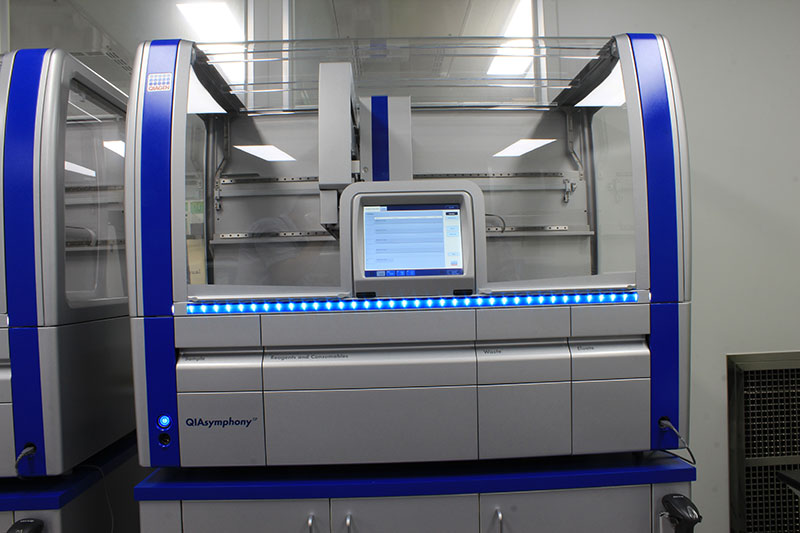
Product Name : QIASYMPHONY(QIAGEN)
Automation equipment
used for DNA extraction during DNA analysis. 4 sets of 24 samples,
namely 96 samples, can be automatically extracted without cross
contamination.
Laboratory Equipment
닫기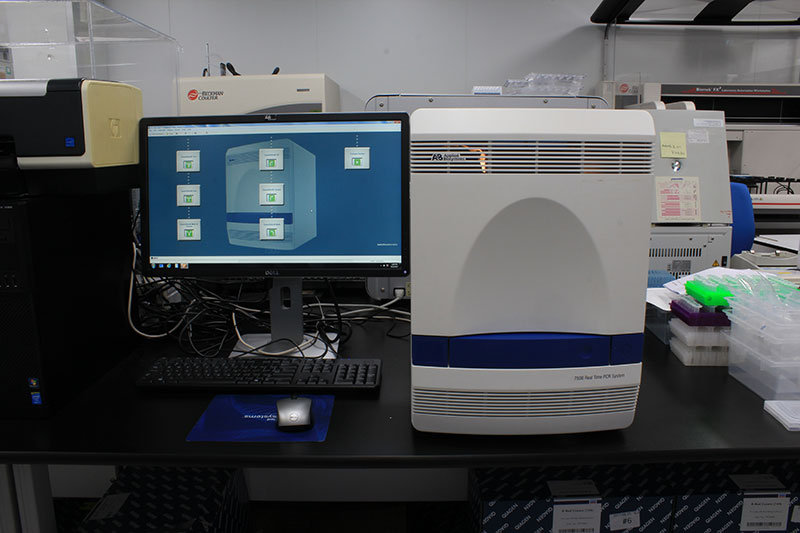
Product Name : AB7500(Life technologies)
Used for DNA
quantification during DNA analysis. The amounts of total DNA and
male DNA and the degree of DNA degradation can be checked by using
the quantitative kit provided by the company.
Laboratory Equipment
닫기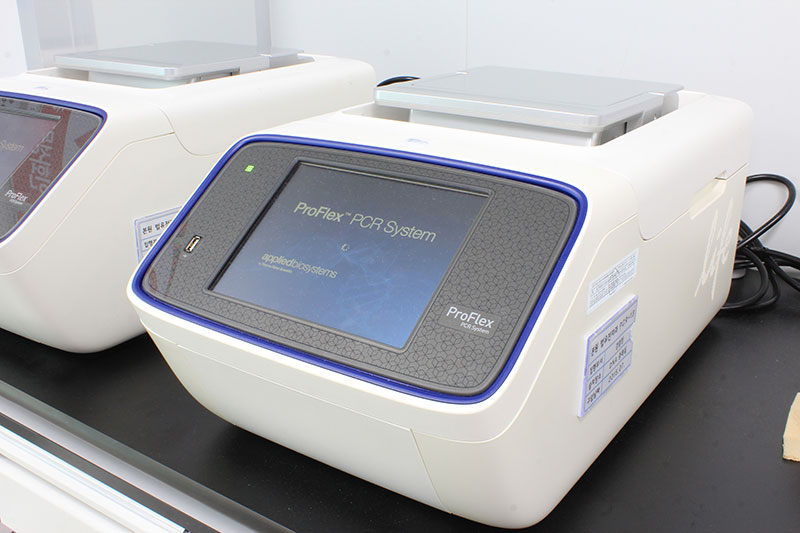
Product Name : ProflexTM system(Life Technologies)
Used for amplification of DNA during DNA analysis and is useful
for amplification of a multiplex kit that can amplify multiple
positions provided by the company and other companies at the same
time.
Laboratory Equipment
닫기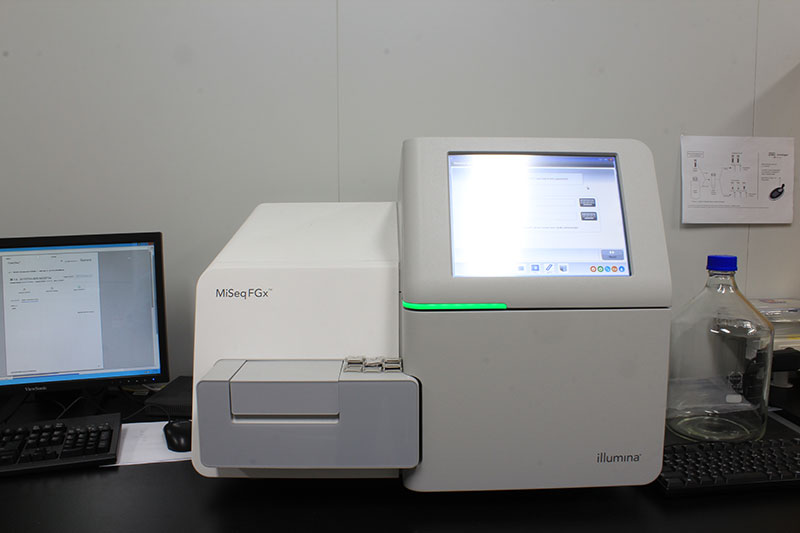
Product Name : Miseq(illumina)
Automatic next generation
sequencing system that replaces Sanger sequencing using the
existing chain terminator. It can analyze a large amount of
nucleotide sequences in a short period of time using a reversible
terminator.
Laboratory Equipment
닫기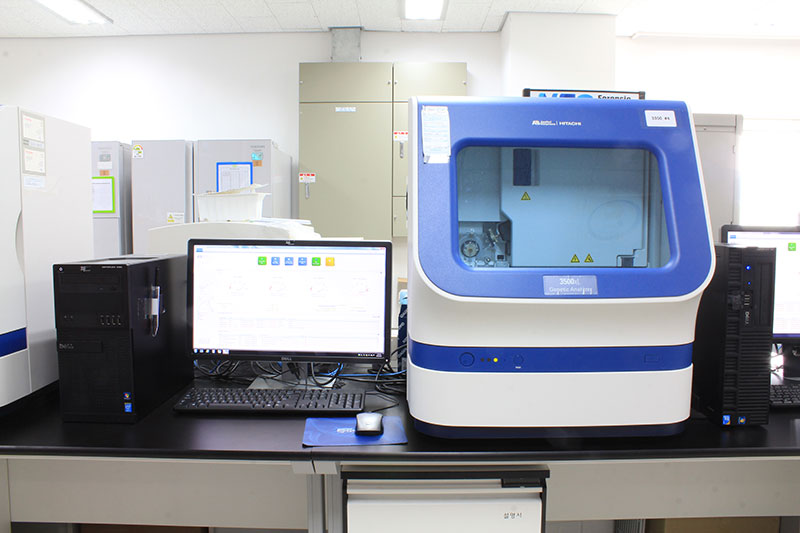
Product Name : 3500XL(Life Technologies)
Automatic
capillary electrophoresis system used for securing the DNA profile
at the end of DNA analysis. It is operated with 24 channels,
thereby having high output, and it is easy to use because
consumables are available as a kit.
Laboratory Equipment
닫기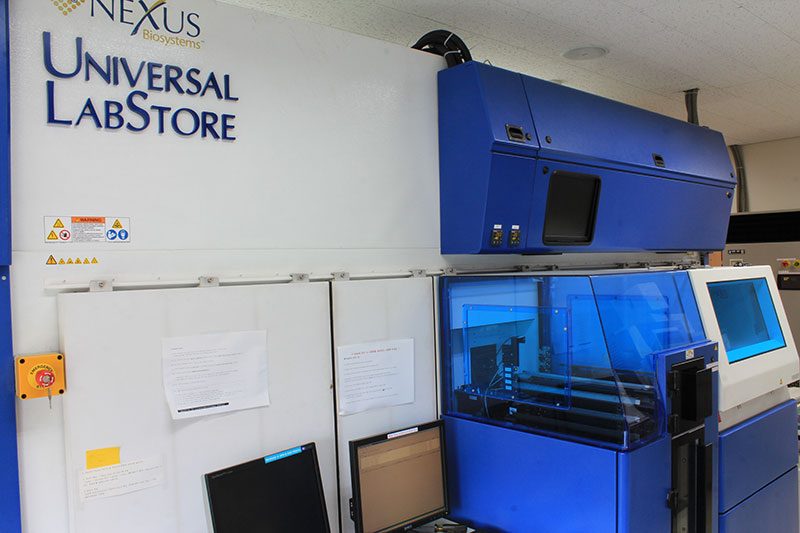
Product Name : Universal Labstore(NEXUS biosystems)
System
for DNA storage at -80℃ and indexing
Major Analysis Cases
- 1
 1995.06
1995.06
Sampoong Department Store Collapse - 2
 1997.08
1997.08
Crash of a Korean Air jumbo jet in Guam - 3
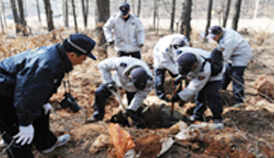 2007.12
2007.12
Disappearance of two Anyang Elementary School students (Hye-jin, Ye-seul) - 4
 2014.04
2014.04
Sinking of the Sewol Ferry - 5
 2019.10
2019.10
Return of remains of victims forced to be mobilized overseas during Japanese colonization of Korea
Major Analysis Cases
닫기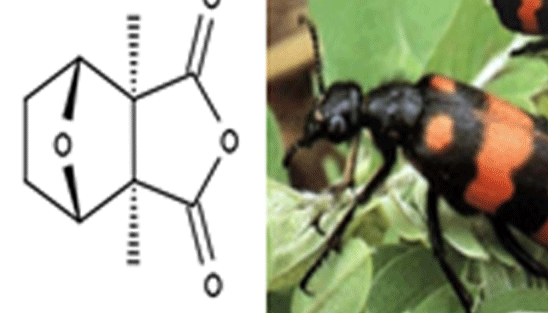
불임치료목적으로 복용한 반묘(cantharides)에
의한 사망사건
강원도 원주시 한의원에서 불임치료목적으로 지은 한약, 한약가루약(일명 반묘가루) 및 한약추출액을 혼합하여 마신 직후 환자가 사망하였으며, 감정결과 위 내용물 및 혈액에서 칸타리 딘(cantharidin)이 검출됨. 칸타리딘은 반묘의 주성분으로 치사량이 10mg이고 과량복용시 복통, 이질, 토혈, 혈뇨, 혈압 저하 등에 이어 사망한다고 알려져 있음

